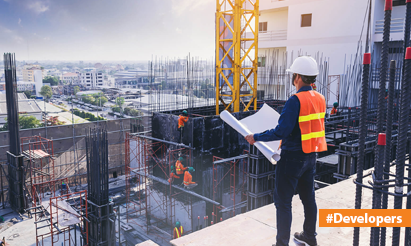The Secrets of Yellow Zone Land: A Comprehensive Guide
In the vast realm of real estate and zoning, understanding the intricacies of land categorization is paramount. Today, we delve into the enigmatic world of Yellow Zone Land, unlocking its meaning and shedding light on its significance in urban planning and development.
Decoding Yellow Zone Land
Yellow Zone Land, often shrouded in mystery, plays a pivotal role in the tapestry of zoning regulations. Unlike its counterparts, this zone signifies a unique blend of opportunities and restrictions. To comprehend its essence, one must delve into the zoning codes that define the permissible land use, density, and building standards within this distinctive classification.
The Purpose of Yellow Zone
Balancing Act of Development
Yellow Zone Land acts as a delicate equilibrium between residential, commercial, and industrial interests. It aims to strike a harmonious balance, fostering a sustainable environment where diverse activities coexist without compromising the overall urban fabric.
Regulatory Framework
Within Yellow Zones, meticulous regulations govern the types of structures, permissible land use, and architectural guidelines. These regulations aim to create a cohesive urban landscape while addressing the evolving needs of the community.
Characteristics of Yellow Zone Land
1. Mixed-Use Potential
Yellow Zone Land is characterized by its versatility, offering the potential for mixed-use development. This unique trait makes it an attractive option for investors seeking to capitalize on the fusion of residential, commercial, and recreational spaces.
2. Density Parameters
Understanding the density parameters is crucial within Yellow Zones. Developers must navigate specific guidelines dictating the maximum allowable density, ensuring that the built environment aligns with the zoning regulations.
3. Architectural Aesthetics
Architectural aesthetics within Yellow Zone Land are carefully curated. From building heights to design elements, adherence to predetermined standards ensures a visually cohesive urban landscape.
Navigating Yellow Zone Regulations
1. Land Use Planning
Navigating Yellow Zone regulations begins with a comprehensive land use plan. This strategic document outlines the intended use of the land, identifying areas designated for residential, commercial, or mixed-use purposes.
2. Zoning Compliance
Ensuring zoning compliance is paramount for any development within Yellow Zones. Developers must meticulously adhere to height restrictions, setback requirements, and other zoning parameters to secure project approval.
3. Community Engagement
Yellow Zone developments often involve extensive community engagement. Engaging with local residents and stakeholders fosters a collaborative approach, addressing concerns and integrating valuable community input into the development process.
Yellow Zone Land in Practice
1. Success Stories
Highlighting success stories within Yellow Zones serves as inspiration for aspiring developers. Case studies of well-executed projects showcase the potential for creating vibrant, sustainable communities within the framework of Yellow Zone Land.
2. Challenges and Solutions
No landscape is without challenges. Exploring common challenges faced in Yellow Zone developments and presenting innovative solutions fosters a pragmatic approach for industry professionals.
Conclusion
In conclusion, Yellow Zone Land embodies a nuanced realm within urban planning, offering a canvas for innovative and sustainable development. Understanding its intricacies empowers developers, city planners, and investors to navigate this distinctive landscape with precision.
Disclaimer: The views expressed above are for informational purposes only based on industry reports and related news stories. PropertyPistol does not guarantee the accuracy, completeness, or reliability of the information and shall not be held responsible for any action taken based on the published information.




